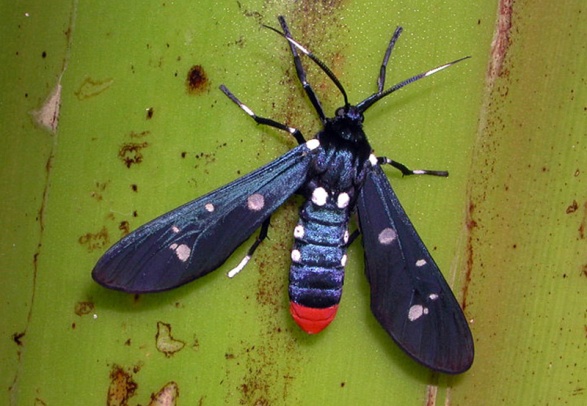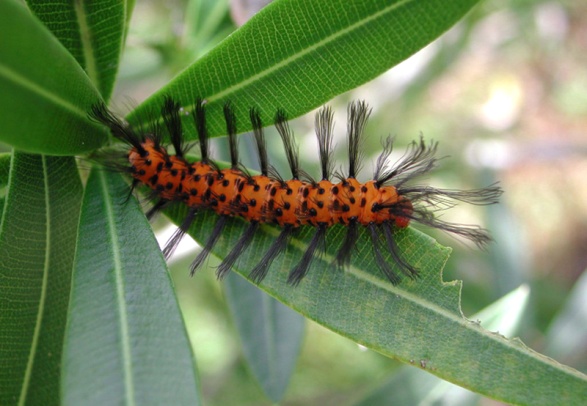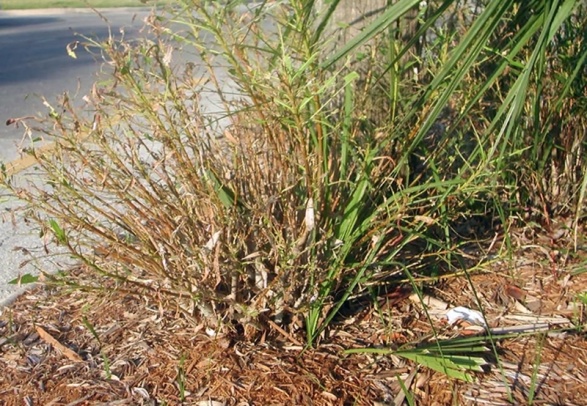
Oleander caterpillar
Syntomeida epilais Walker
(Insecta: Lepidoptera: Arctiidae)
Adult moths appear wasplike, with slender, metallic-blue bodies and wings that bear white spots. The abdominal tip is bright red. Wingspan is 45 to 51 mm. Larvae are bright orange with black warts that bear tufts of long, black hairs. They grow in length from 3 to 40 mm. The smooth brown pupae form aggregations within a thin, silken cocoon, often found on tree trunks or buildings.
Unlike other moths, adults are active during the day. Females deposit egg masses of 12 to 75 eggs on the undersides of leaves, and first instars hatch in two to six days. Larvae, consuming foliage, progress through six instars within 28 days. Second and third instars feed gregariously, and fourth through sixth instars are solitary.
Native to the Caribbean, oleander caterpillar occurs in northern South America, Central America, Mexico, and the coastal regions of the southeastern United States. It is present throughout the year in South Florida, from where it disperses northward every spring.
Syntomeida epilais feeds mostly on the non-native oleander, but its original host is a vine (Echites umbellata Jacq.) of beach and pineland habitats.
Images
To
save the Web-optimized images shown below to your hard drive:
PC users: right click to "Save Picture (or Image) As..."
Mac users: click and drag to your desktop.

Adult moth of oleander caterpillar, Syntomeida epilais Walker
(Photographer: Lyle Buss, University of Florida)

Larva of oleander caterpillar, Syntomeida epilais Walker
(Photographer: Lyle Buss, University of Florida)

Oleander damaged by oleander caterpillar, Syntomeida epilais Walker
(Photographer: Lyle Buss, University of Florida)